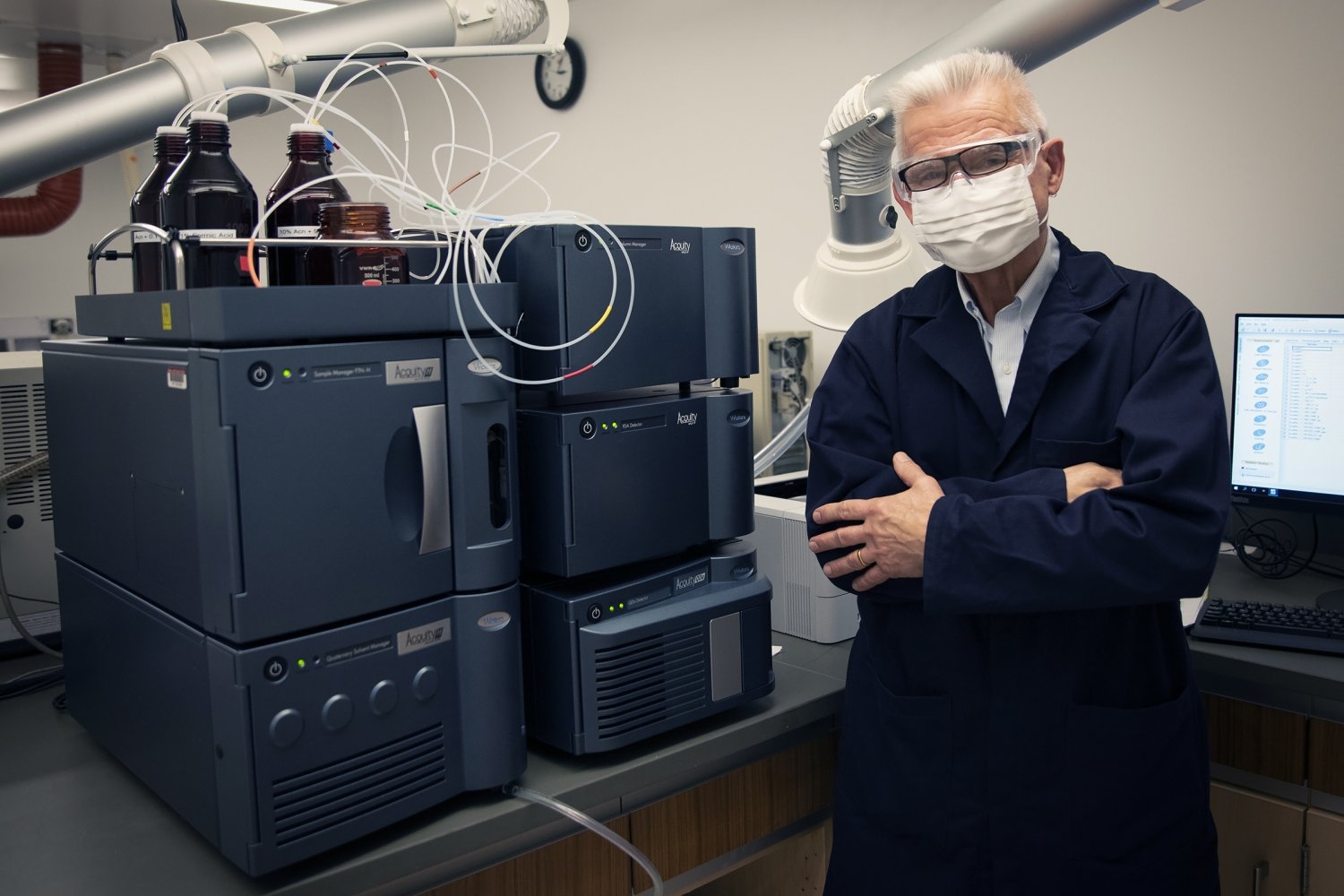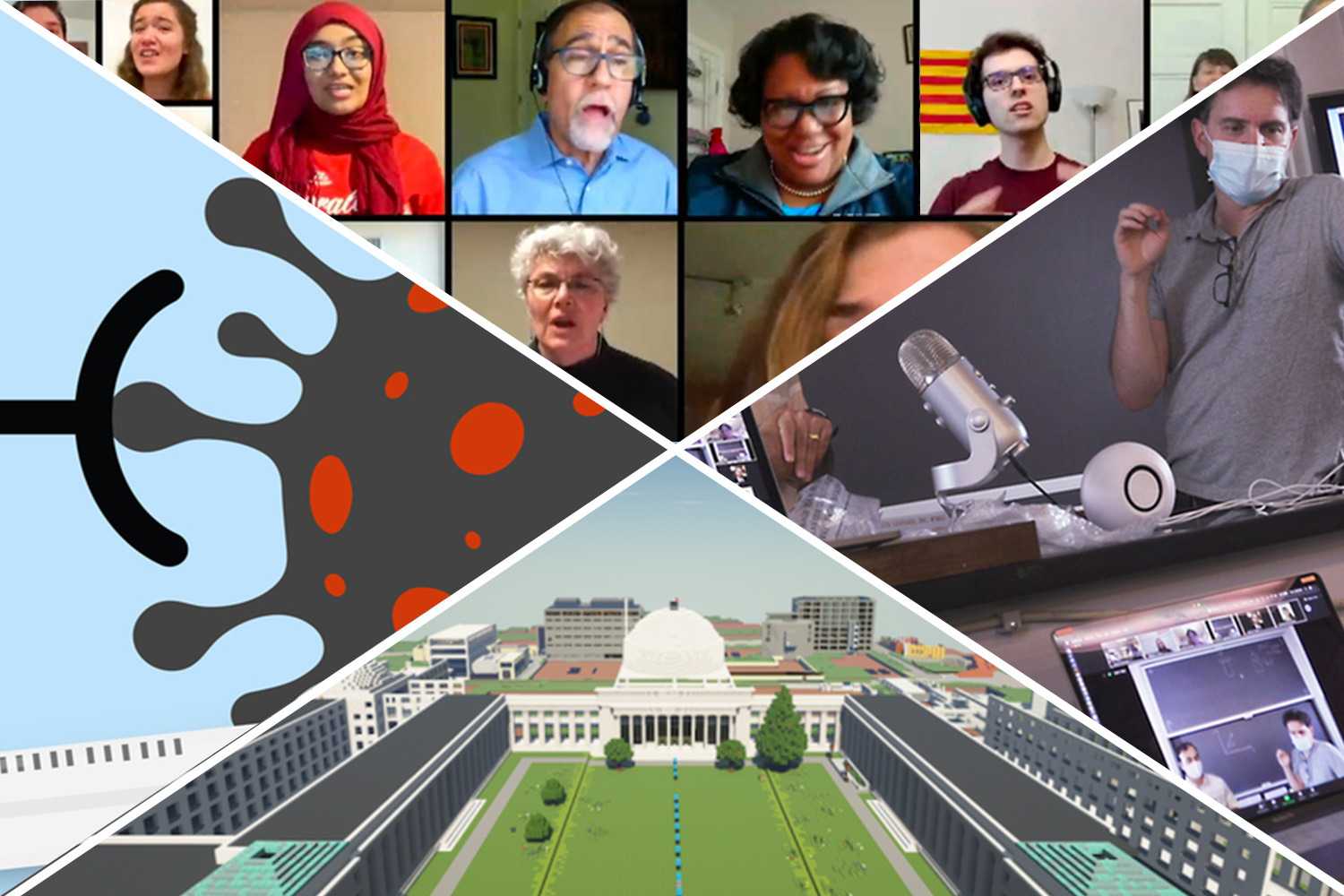Donated instrument provides undergraduate chemistry students high-level research experience
Cutting edge-tool reserved exclusively for students is fast, efficient, and environmentally friendly.

Beta defensins are a class of antimicrobial peptides that vary in size from 61 to 183 amino acids. More than 3,000 beta defensins had been identified prior to this year — until undergraduates in a lab class taught by associate professor of chemistry Bradley Pentelute synthesized some that had never been synthesized or characterized before.
Part of the interest in these peptides stems from their potential ability to elicit an immune response to pathogens. Pentelute is collaborating in this project with researchers at Massachusetts General Hospital, and the beta defensins synthesized by the students will be tested in the hopes that some may lead to new varieties of antibiotics — a high priority in an era when antibiotic resistance is becoming an urgent concern.
When the students needed to analyze their peptides, they turned to a powerful instrument reserved just for their use: the Ultra Performance Liquid Chromatography-Mass Spectrometer (UPLC-MS) from Waters Corp. Installed this year in the Undergraduate Teaching Laboratories (UGTL) of MIT’s Department of Chemistry, this instrument has a modest profile — the size, say, of two pairs of standard printers stacked on a desk — but it’s having an uncommonly large impact on the undergraduate research experience.
“It’s a very effective piece of equipment, and it’s rare to have a cutting-edge tool like this reserved exclusively for undergraduates,” says John Dolhun, director of the UGTL. “Undergraduate students can learn new analytic techniques in chemical biology and other areas that they normally wouldn’t encounter until graduate school or upon taking a job in industry. That makes for an eye-opening experience.”
The UPLC-MS combines two analytical techniques in a single tool: liquid chromatography, which physically separates a sample into its constituent parts, and mass spectrometry, which identifies the mass, composition, and chemical structure of the individual components. Another example of how students employ this capability came during the fall 2020 semester. Students taking class 5.362 (Kinetics of Enzyme Inhibition) used the LC-MS to confirm the presence of both phosphorylated and unphosphorylated peptides in a reaction of ABL kinase with a target peptide and an inhibitor, Gleevec. Previously, students had no way of knowing whether this reaction worked during the experiment.
Research of this sort is facilitated by the fact that the machine is fast, efficient, and easy to use, says Dolhun. “It’s all automated,” he says. “After loading the samples, students can get their spectrum very quickly, typically within 10 to 15 minutes. That means they can accomplish much more in each lab session, while having more time to analyze and discuss the data they’ve obtained.” And there’s an added bonus, he says. “Anything that gives them a faster result can free up their brains for the next project.”
The teaching labs occupy the top floor of MIT.nano (Building 12), a five-story, 214,000-square-foot facility that opened in fall 2018, providing more than 100,000 square feet of laboratory space devoted to the study of materials, devices, and phenomena at the scale of atoms and molecules.
The UPLC-MS was donated by the Waters Corporation, a Massachusetts-based scientific equipment company that also helped with the installation and maintenance of the instrument, as well as the training for its use. Waters is a founding member of the MIT.nano Consortium, a group of 14 companies drawn from industries around the globe interested in nanoscale discoveries and innovations emerging from MIT.
“MIT.nano and the chemistry teaching labs are the only two occupants of Building 12, leading to close collaborative bond and a strong partnership between MIT.nano and the Department of Chemistry,” says Vladimir Bulović, faculty director of MIT.nano. “When the opportunity arose to help steer Waters’ contribution to the UGTL, we were delighted to collaborate in this effort to enhance undergraduate education at MIT.”
The UPLC-MS also offers environmental advantages. Because the machine operates at pressures more than twice those used in more typical high-performance counterparts, with higher efficiency column design and substantially lower flow rates, it can work with samples up to 400 times smaller in volume. “That means that orders-of-magnitude less solvent is required,” says Whitney Hess, MIT.nano’s manager of safety systems and programs, “which leads to much less waste overall.”
Waste minimization and green chemistry strategies were, in fact, among the criteria that led to the UGTL winning the 2020 SafetyStratus Award from the American Chemical Society (ACS) in recognition of the most comprehensive chemical safety programs in higher education. Hess, who partnered with Dolhun in crafting the MIT nomination for the ACS award, says the UGTL has taken other steps to implement green chemistry practices, including green chemistry-focused lab curricula, the recycling of solvents, and switching from older, inefficient equipment to newer models that generate less waste.
On the research front, Dolhun says, “Now that we’ve seen what the UPLC-MS can do, we’re striving to come up with novel ways of utilizing this machine. It has prompted us, moreover, to seek out other pieces of equipment that should be brought into the labs to further challenge our students and accelerate their education.”





































